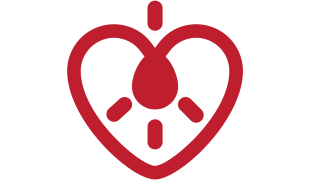- 4338
- 287
- 18
- 13
- 0
- Help Ukraine
About the solution
Chloe Meineck’s great-grandmother Winnie suffers from dementia. At the age of 104 she could still play the piano but could never recognized Chloe whenever she visited her at the nursing home. However, when hearing certain song, Winnie’s memory was awoken and she would start recounting stories from the past. That intrigued Chloe, who explains: “I was always interested and really confused how she could play the piano, but not remember who I was.“
Inspired by her great-grandmother, Chloe created the Music Memory Box, a tool that uses objects, music and photographs to help people with dementia remember their past and connect with their loved ones. The box works in a very simple way:
• Create a photo collage of different times in the box owners life in the lid of their box
• Gather the music that they love, that prompts fond memories
• Find objects that are meaningful to them, or make some new ones
• Add the music to the box on a simple USB memory stick
• Place one stick-on-sensor on each object
• Use the simple controls to match a piece of music to the objects, the box will even talk you through it
Then, just take any object, place in the center of the box, and the song associated with the object will start to play.
The Music Memory Box is based on innovative practices like music therapy, life story work and reminiscence therapy. As Chloe explains “The connection between music, emotion and memory is in the part of the brain, that is the least affected by Alzheimer’s Disease. Meaning music we have an emotional connection to has an amazing effect on all people but especially with people living with dementia.” The box provides “A way to communicate to family members and to connect them together. Improves the person’s sense of connection to both themselves and their identity and to other people.”
Adapted from: https://www.kickstarter.com/projects/studiomeineck/music-memory-box-new-...
https://youth-time.eu/the-music-memory-box-used-to-revive-the-broken-bon...
More information: https://www.musicmemorybox.com/
This solution shall not include mention to the use of drugs, chemicals or biologicals (including food); invasive devices; offensive, commercial or inherently dangerous content. This solution was not medically validated. Proceed with caution! If you have any doubts, please consult with a health professional.
DISCLAIMER: This story was written by someone who is not the author of the solution, therefore please be advised that, although it was written with the utmost respect for the innovation and the innovator, there can be some incorrect statements. If you find any errors please contact the patient Innovation team via info@patient-innovation.com
-
-
582
-
0
-
8453

Music to help autistic children
COMMUNICATION: Communicating, whether by speaking, listening, or other means
CAREGIVING
Listening to music
Autism
Podcast
Educational/Leisure device (book, toy, game...)
Social Media
Difficulties with speech
Difficulties learning how to talk
Promoting self-management
Managing Neurological Disorders
Promoting inclusivity and social integration
Improving Speech and Communication
To improve Treatment/Therapy
Raise awareness
Caregiving Support
Child and Adolescent Psychiatry
Neurology
Pediatrics
Psychiatry
United States
-
-
-
582
-
0
-
9952

Son developed a therapy with music and image to help his father with Alzheimer's disease
CAREGIVING
COMMUNICATION: Communicating, whether by speaking, listening, or other means
Listening to music
Dancing
Alzheimer's Disease
Strategy/Tip
Difficulty coordinating movements
Difficulty speaking or understanding speech
Cognitive impairment
Memory loss
Confusion
Acquired language impairment (Aphasia)
Managing Neurological Disorders
Maintaining Balance and Mobility
To improve Treatment/Therapy
Caregiving Support
Neurology
United States
-
-
-
599
-
0
-
10186

Fighting dementia with flowers and activities
COMMUNICATION: Communicating, whether by speaking, listening, or other means
CAREGIVING
Gardening
Social interaction
Alzheimer's Disease
Educational/Leisure device (book, toy, game...)
Strategy/Tip
Memory loss
Confusion
Mood swings
Depression or anxiety
Fatigue
Promoting self-management
Managing Neurological Disorders
Building Supportive Community Relationships
Promoting inclusivity and social integration
Raise awareness
Caregiving Support
General and Family Medicine
Neurology
Psychiatry
United States
-
 en
en